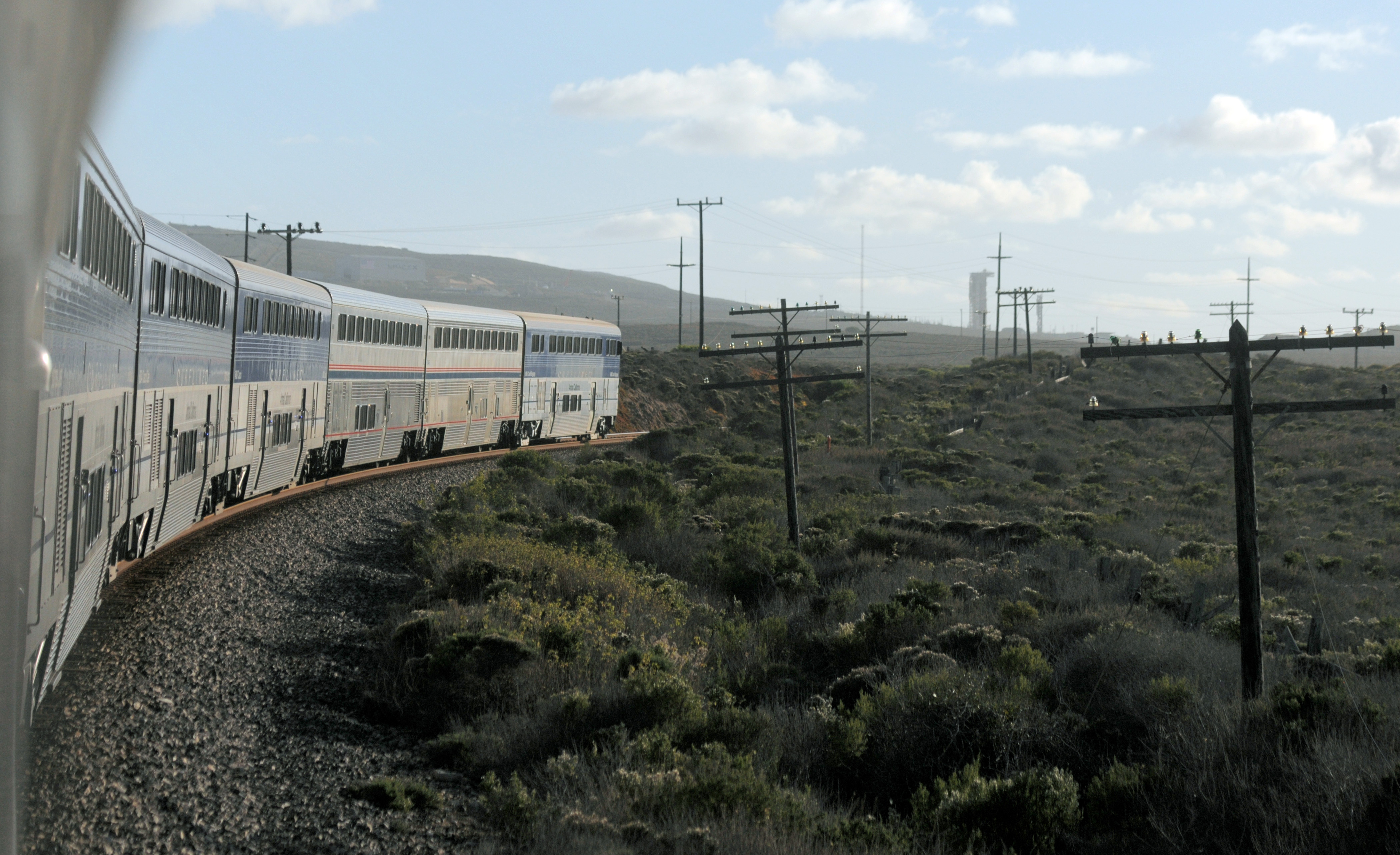Passenger Trains: Part of America’s Soul
Government, Transit, and the Need to Move

As Amtrak’s Coast Starlight leaves Santa Barbara’s beautifully restored station, I hum “Soul Train.” Like Amtrak, the song hails from the early 1970s, the era when President Biden acquired the nickname “Amtrak Joe.” Today, Biden confronts a rail carrier in desperate shape. Trains serving most of the 21,000-mile system are beleaguered, chronically starved of funds and now threatened with extinction. They are also part of America’s soul.
This is the Amtrak most Americans know. These trains normally stop once a day in more than 220 communities from Paso Robles to Cleveland. Some take the Chicago-to-Emeryville Zephyr for views of the Rockies and Sierra. Others need to get to Reno, or Provo, Utah, places no longer served by Greyhound buses.
The Seattle-to-Chicago Empire Builder provides a lifeline to a region with scant airline service. Strangers talk to each other rolling past Wolf Point and Shelby, Mont. Red and blue citizenry linger in observation cars, coaches and diners in a sort of moving town square.
Nothing moves body and soul like cross-country Amtrak. “In Transit,” the last work of cinéma vérité pioneer Albert Maysles, offers a paean to this unique national experience. As the New York Times put it, the movie “depicts cross-country train travel as a rare refuge of American idealism … and echoes John Ford in its portrayal of how Americans form communities.”
Lost in decades of political battles is the fact that Amtrak’s 15 long-haul trains are its highest performers in terms of popularity and profitability. As Britain’s International Railway Journal put it, “The long-distance segment that Amtrak disdains has the highest annual output, load factors and market shares of all of Amtrak’s trains.”
Before the pandemic, in the Coast Starlight’s dining car just north of Goleta, I regard the pounding surf and make small talk with my lunch companion from Orange County. Life in Anaheim is good, he tells me, but taxes are too high and immigrants too numerous. Many of the latter, he confides, aren’t even Christians. I point out the Channel Islands and consider mentioning that I am Jewish.
Instead, we discuss the train. His sleeping compartment, like mine, is old and shows signs of wear. Government, he says, shouldn’t be in the train business. He smiles, making it hard for me to tell him that Congress has starved the Coast Starlight of funds and private passenger railroads went bankrupt 50 years ago. Fortunately, he spots a distant oil platform. Morning, I tell him, will bring us the upper Sacramento River, close views of Mount Shasta and a cliff-hanging descent of Oregon’s Willamette Canyon.
Fortunately, dinner ends without discussing Amtrak’s finances, a touchy topic since Trump-appointed CEO Richard Anderson cited poor financial performance as a reason to shut down all long-haul trains. In interviews, Anderson, who resigned in April 2020, insisted that Amtrak made a profit on the Northeast corridor.
Amtrak owns the 457-mile electrified Northeast line and relies on Congress to cover repairs. These now include $1.9 billion for a Potomac River bridge, over $4.5 billion for a Baltimore tunnel and $1.8 billion for a Hudson River tunnel.
Amtrak’s long-distance trains don’t have these costs. They use freight track, paying Union Pacific, BNSF and others a small fee. They also make big bucks from sleeping cars. A couple can spend $1,000 to share a compartment on the Coast Starlight.
In the pandemic, long-distance trains like the Coast Starlight have been cut to three times a week. The routes are doomed if Amtrak doesn’t replace coaches almost 40 years old. Bill Flynn, Amtrak’s current CEO, says most long-haul service will be restored by May 24.
Fortunately, Amtrak has supporters from coasts and heartland. There are no flyover states on the nation’s rail map.
What can President Biden do for Amtrak? Fritz Plous, writing in Railway Age, wants Amtrak “positioned alongside the Federal Highway Administration and Federal Aviation Administration on the Department of Transportation org chart.” This would make Amtrak “equal to those agencies in status, budget, access to the Secretary or influence on national transportation policy.”
At 7:30 a.m. the Coast Starlight is slicing through boulders and lava flows at the base of Mount Shasta. From the domed observation car, glaciers on the snowy volcano appear deceptively close. As the rails turn, views of the peak steadily shift. On a train the scene may change dramatically, but the tracks don’t. A rail journey is all about continuity.
At 8:30 p.m. the Coast Starlight arrives at Seattle’s King Street Station, where I stop to gaze at the station’s ceiling. Until 2013, the exquisite plasterwork was hidden under acoustical panels. The $55 million restoration affirms what the 1906 designers clearly understood: The nation needs to be transported.
In his youth Paul Bendix, author of “Dance Without Steps,” summered in Santa Barbara and visits often. He served on the Citizens Advisory Committees of Caltrain and San Francisco’s new Transit Center. He is an active member of RailPAC, Rail Passenger Association of California and Nevada, railpac.org.



